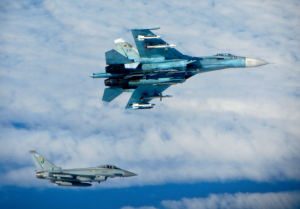Miles A. Pomper
Egle Murauskaite
September 17, 2015
The following is an excerpt from a paper published by the Danish Institute of International Studies.

Image courtesy of Wikimedia
As the conflict in Ukraine continues, NATO has seen a step up in Russian military posturing– from provocative behavior at air and sea in the Baltic region to nuclear saber rattling rhetoric. At the 2014 NATO Summit in Wales, states agreed on several measures to adjust NATO’s deterrence posture, emphasizing commitment to defend fellow members against outside attack. In June 2015, the authors interviewed twenty-two policy makers, government security professionals, and independent analysts in Estonia and Lithuania for their assessment of how well these steps were being implemented, their sufficiency to deter Russia, and the nature of the Russian threat.
The interviews indicated that the new NATO measures have had a key desired effect– reassuring jittery new members that NATO (and especially the United States) took their concerns and the Russian threat seriously. Policymakers expressed relief that there was a new interest by Western NATO members in the region after two decades of ostensibly underappreciating the prospects of East-West conflict. While experts suggested that the alliance was moving in the right direction to close deterrence gaps, most felt the need to accelerate the pace of implementation, and solidify NATO’s conventional deterrent in the region through larger persistent deployment of equipment and forces (particularly U.S. forces).
Read the full analysis from the Danish Institute of International Studies.
